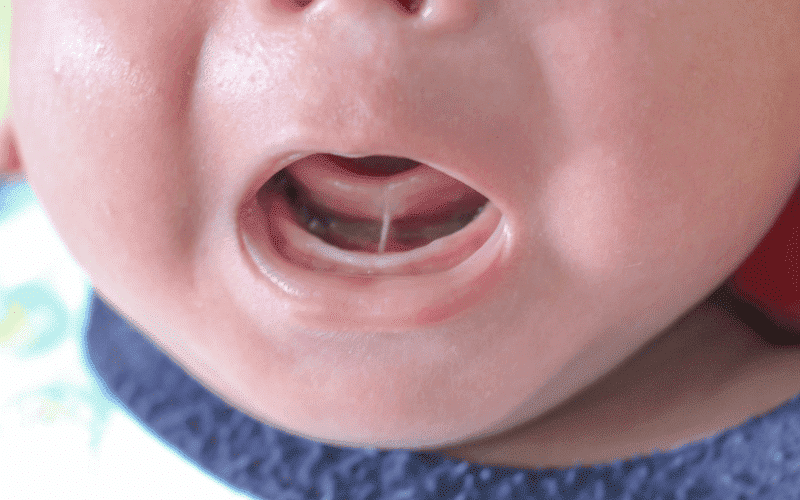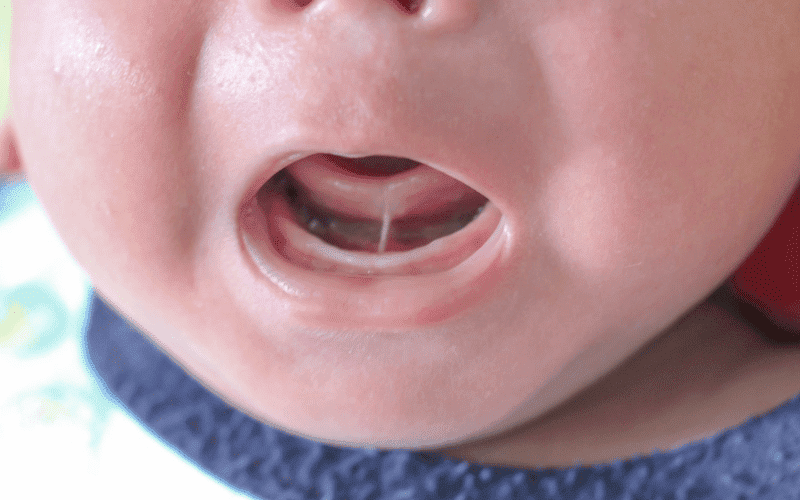What is a Frenectomy and Why Might Your Child Need One?

Have you ever heard of a frenectomy and wondered if it’s something your child might need?
It’s a common procedure, but many parents are unfamiliar with what it involves and why it might be necessary. Simply put, a frenectomy addresses issues related to the frenulum, the small fold of tissue that connects different parts of the mouth and lips. If this tissue causes problems, a frenectomy might be the solution.
In this blog, we’ll break down everything you need to know about frenectomies. We’ll explore why this procedure might be recommended, the different types of frenectomies, and what you can expect before, during, and after the procedure.
Whether you’re considering a frenectomy for your child or just curious about what it involves, we aim to provide clear, straightforward information to help you make the best decision for your child’s health and comfort.
What is a Frenectomy?
A frenectomy is a simple surgical procedure that removes or modifies the frenulum—a band of tissue connecting the lips, tongue, or gums to other parts of the mouth. The frenulum is present in everyone, but in some cases, it can cause oral health issues or interfere with normal function.
Types of Frenulums
- Lingual Frenulum: Connects the bottom of the tongue to the floor of the mouth. If this frenulum is too tight, it may restrict tongue movement, causing problems with speaking, eating, or swallowing.
- Labial Frenulum: Connects the upper lip to the gum. A tight labial frenulum can cause issues with tooth alignment and may affect oral hygiene.
- Buccal Frenulum: Found between the gums and the inside of the cheek. Though less common, issues with this frenulum can impact oral function.
Understanding the specific type of frenulum and its effects helps in assessing the need for a frenectomy.
When Might Your Child Need a Frenectomy?
A frenectomy is considered when the frenulum interferes with normal oral functions or causes discomfort. Here’s when it might be necessary:
Common Indications
- Tongue-Tie: If the lingual frenulum is too short or tight, it can restrict tongue movement, affecting speech, eating, and even breastfeeding in infants.
- Lip-Tie: A tight labial frenulum can pull on the gums, potentially leading to dental alignment issues or impacting the ability to properly clean the teeth.
- Oral Health Issues: Sometimes, an abnormal frenulum can contribute to gum recession or other oral health concerns.
Assessing the Need
- Dentist’s Evaluation: Your child’s dentist will assess the frenulum’s impact on oral functions and recommend a frenectomy if necessary.
- Functional Concerns: Issues with speaking, eating, or oral hygiene often prompt a frenectomy.
What to Expect During a Frenectomy?
Understanding what happens during a frenectomy can help reduce any anxiety about the procedure. Here’s a look at the process:
Procedure Overview
- Preparation: The dentist will explain the procedure to both you and your child, and local anesthesia will be administered to numb the area.
- Surgical Process: The frenulum is either removed or modified using a laser or traditional surgical tools. The procedure typically takes only a few minutes.
- Post-Procedure Care: After the frenectomy, your child may experience some discomfort or swelling, but this generally subsides quickly.
Recovery and Aftercare
- Follow-Up Visits: Regular follow-ups may be required to ensure proper healing.
- Care Instructions: The dentist will provide specific aftercare instructions, including diet and oral hygiene practices.
Benefits of a Frenectomy
A frenectomy can offer several benefits, improving both oral function and overall comfort. Here’s how:
Enhanced Oral Function
- Improved Speech: By freeing up the tongue, a frenectomy can help improve speech clarity in children with tongue-tie.
- Better Eating: With less restriction, eating becomes more comfortable and effective.
Dental Health Benefits
- Reduced Tooth Misalignment: A frenectomy can help prevent or correct issues caused by a tight labial frenulum, leading to better dental alignment.
- Easier Oral Hygiene: With improved frenulum function, maintaining oral hygiene becomes easier.
Comfort and Quality of Life
- Less Discomfort: Removing or modifying the frenulum can alleviate discomfort and improve quality of life.
Risks and Considerations
Like any procedure, a frenectomy comes with its risks and considerations. Understanding these helps in making an informed decision:
Potential Risks
- Bleeding: Some bleeding is normal but usually minimal.
- Infection: Rare, but possible. Proper aftercare helps minimize this risk.
- Scarring: Minimal scarring is possible but rarely affects function or appearance.
Considerations
- Age and Health: Younger children generally recover faster, but individual health conditions can affect healing.
- Long-Term Outcomes: Most children experience significant improvement in oral function and comfort.
Preparing Your Child for the Procedure
Preparing your child for a frenectomy can make the experience smoother and less stressful. Here’s how to help:
Before the Procedure
- Explain Simply: Use age-appropriate language to explain the procedure, focusing on how it will help them.
- Comfort and Reassurance: Provide comfort and reassurance to ease any fears.
Day of the Procedure
- Keep Calm: Your calm demeanor helps your child stay relaxed.
- Follow Instructions: Adhere to any pre-procedure instructions provided by the dentist.
Post-Procedure Care and Recovery
Proper care after a frenectomy is crucial for a smooth recovery. Here’s what you need to know:
Immediate Aftercare
- Pain Management: Over-the-counter pain relievers can help manage discomfort.
- Diet: Soft foods are recommended to avoid irritating the area.
Long-Term Care
- Oral Hygiene: Maintain good oral hygiene to prevent infection.
- Follow-Up: Attend all scheduled follow-up appointments to monitor healing.
When to Consult a Specialist?
In some cases, consulting a specialist may be necessary. Here’s when:
Indicators for Specialist Care
- Persistent Issues: If problems persist despite the procedure, a specialist may provide additional insights.
- Complex Cases: Complex cases or complications may require specialized care.
Benefits of Specialist Care
- Expert Evaluation: Specialists offer in-depth evaluations and advanced treatments if needed.
A frenectomy can make a significant difference in your child’s oral health and overall comfort. By addressing issues like tongue-tie or lip-tie, this simple procedure helps improve oral function and quality of life. If you suspect your child may benefit from a frenectomy, consult with your dentist to explore options. With proper preparation and aftercare, your child can experience the benefits of this procedure and enjoy better oral health moving forward.


